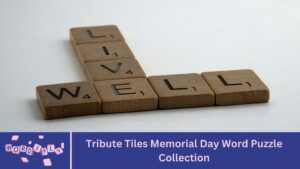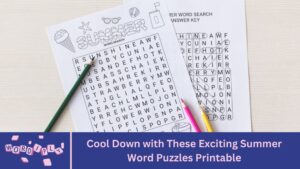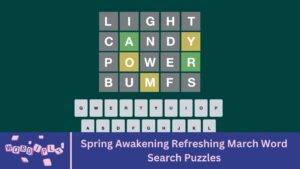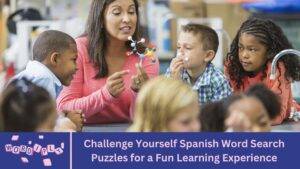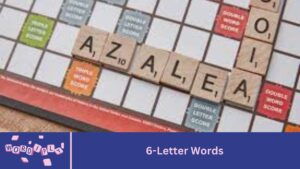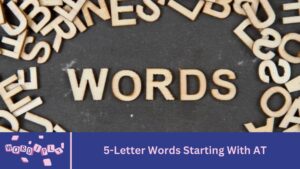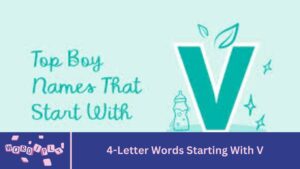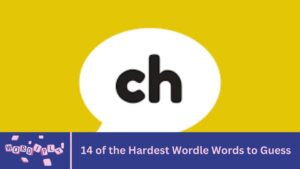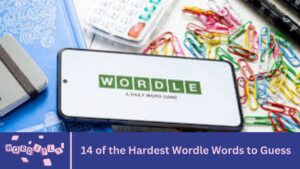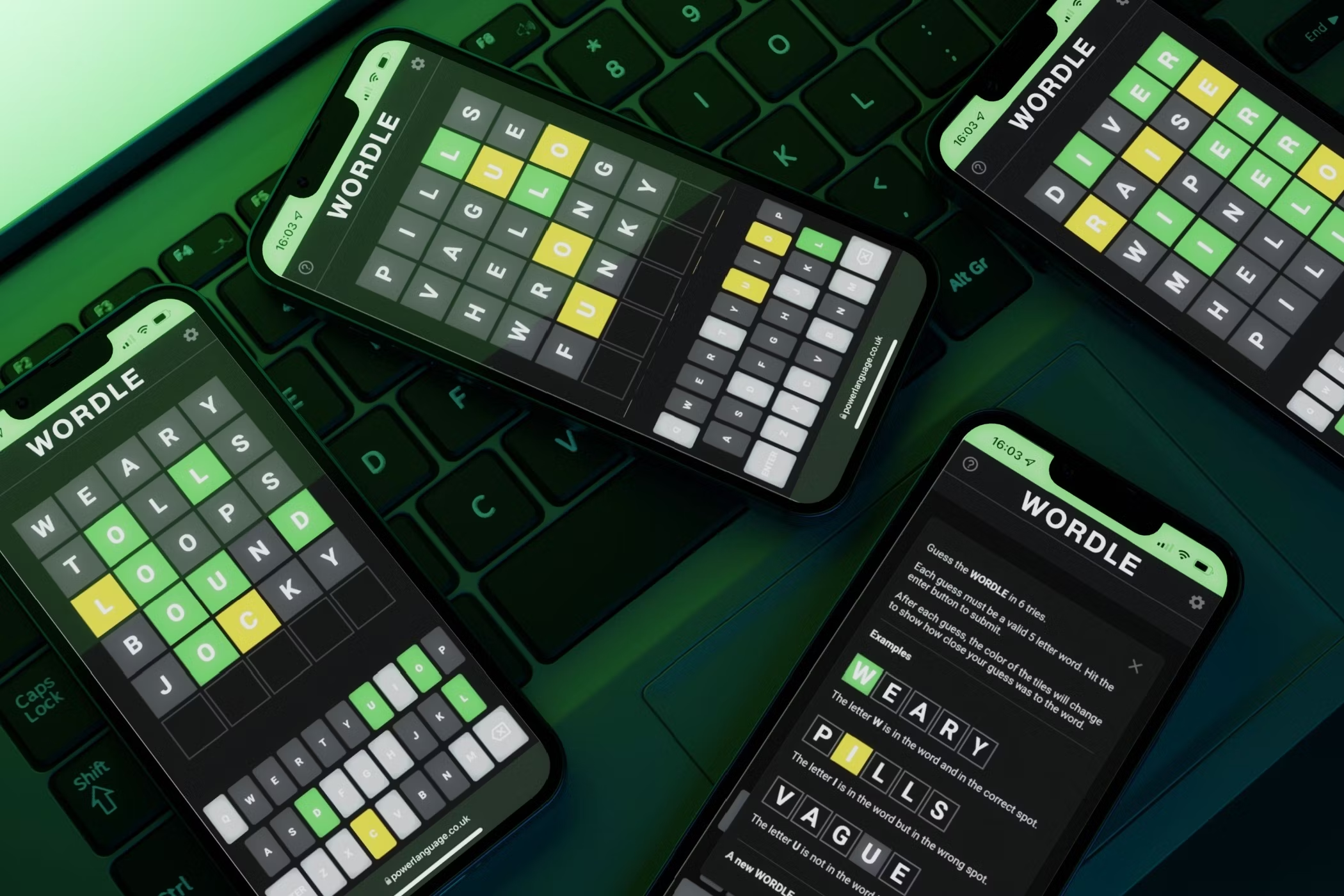
The introduction sets the stage for the article, offering a brief overview of Wordle and establishing the purpose of the content. Here’s how to structure the introduction:
1.Overview of Wordle and Its Popularity:
- Start with a quick introduction to Wordle, explaining that it’s a popular online word puzzle game where players guess a 5-letter word within six attempts.
- Mention its rise in popularity, especially as a daily challenge that has become a favorite among word game enthusiasts.
- You could add a note on how Wordle has become a social activity, with people sharing their results online, fostering a sense of community.
2.Importance of Keeping the Challenge Fun:
- Emphasize the fun aspect of Wordle, which lies in solving the puzzle without spoilers.
- Explain that the article aims to assist those who may be struggling, offering hints without revealing the actual answer, ensuring that the puzzle remains enjoyable.
3.State the Date and Purpose:
- Clearly mention that the hints provided are for today’s Wordle, specifically for August 30th.
- Outline the purpose of the article: to help players who need a nudge in the right direction without ruining the experience for them by giving away the solution.
Understanding Wordle
Wordle is a popular online word puzzle game that has gained widespread popularity for its simplicity and engaging challenge. The game’s objective is straightforward: guess a hidden five-letter word within six attempts. Each day, a new word is chosen, and players worldwide try to solve it.
Here’s how the game works:
1.The Gameplay:
- You start by guessing any five-letter word.
- After each guess, the game provides feedback by coloring the tiles of each letter in three possible ways:
- Green: The letter is in the correct position.
- Yellow: The letter is in the word but in a different position.
- Gray: The letter is not in the word at all.
- Using these clues, you refine your next guess, trying to identify the correct word within the six allotted attempts.
2.The Appeal:
- Simplicity: Wordle’s minimalist design and straightforward rules make it accessible to players of all ages.
- Challenge: Despite its simplicity, Wordle requires both logical thinking and a good vocabulary to solve efficiently. The limited number of attempts adds to the challenge, making each guess crucial.
- Daily Puzzle: Wordle offers just one puzzle per day, creating a sense of anticipation and community as players share their experiences and strategies.
3.Strategy:
- Successful Wordle play involves more than just guessing random words. Players often start with words that contain common vowels and consonants to maximize the information they receive from the first few guesses.
- As the game progresses, players use the feedback from previous guesses to narrow down the possibilities, honing in on the correct word.
4.Community and Sharing:
- Part of Wordle’s charm is its social aspect. Players often share their results on social media, displaying how quickly they solved the puzzle without revealing the actual word, thanks to a grid of colored squares that represent their guesses.
- This has led to a global community of Wordle enthusiasts who discuss strategies, share their daily results, and enjoy the satisfaction of solving the same puzzle as thousands of others around the world.
Hints for Today’s Wordle (August 30th)
1.General Hint:
- This Wordle puzzle might feel a bit tricky at first, especially if you’re not familiar with certain word patterns. The word is not something too obscure but might not be the first thing that comes to mind. It’s definitely a word you’ve heard before, but it may not be a word you use every day. Pay attention to how words are constructed; this one might surprise you.
Hint 1: First Letter
- The word begins with a letter that is fairly common in English, though it’s not one of the vowels. Think about words that start with this letter but aren’t the most obvious choice. For instance, it’s the first letter in the word “train,” though today’s word doesn’t have the same start.
Hint 2: Vowel Placement
- This word contains two vowels, and they are both essential to figuring out the word. Interestingly, these vowels are not adjacent to each other, which might make the word trickier to guess. Consider how vowels often appear in words and how they might interact with consonants in this specific case.
Hint 3: Common Word Usage
- The word relates to a concept that could be part of a conversation about technology or something that operates in a certain way. It’s not a technical term, but it’s definitely something you might discuss in the context of how things function or are used.
Hint 4: Word Association
- To narrow it down further, think about things that can be adjusted or set up. The word is often associated with something you might need to configure or get ready for use. While the word itself isn’t a piece of technology, it’s something that would be relevant in that realm.

Strategies to Guess the Word
Guessing the Wordle word effectively requires a mix of logic, vocabulary knowledge, and strategic thinking. Here are some strategies that can help you improve your chances of solving the puzzle:
1. Start with a Balanced Word
- Choose a Word with Multiple Vowels: Begin with a word that includes a good mix of vowels (A, E, I, O, U) and common consonants. Words like “adieu,” “crane,” or “stare” are popular starting points because they cover a range of letters that frequently appear in the English language.
- Avoid Repeating Letters Initially: To maximize your chances of identifying unique letters, avoid starting with words that have duplicate letters (e.g., “sassy” or “bunny”).
2. Analyze the Feedback
- Green Letters (Correct and in Place): If a letter turns green, you know it’s in the correct position. Build your next guesses around this information by keeping the green letters fixed in place.
- Yellow Letters (Correct but Misplaced): When a letter is yellow, it’s part of the word but in the wrong position. Use this clue to shuffle the yellow letters to different spots in your next guesses.
- Gray Letters (Incorrect): Gray letters are not in the word at all, so avoid using them in subsequent guesses. This helps narrow down your options.
3. Narrow Down Letter Choices
- Focus on Letter Patterns: Consider common letter combinations or patterns in the English language. For example, after identifying a vowel, think of common pairings like “TH,” “CH,” or “SH” to see if they fit into the word.
- Use Process of Elimination: As you rule out letters with each guess, the remaining possibilities become clearer. This process of elimination helps you zero in on the correct word more efficiently.
4. Consider Word Length and Structure
- Think About Possible Word Lengths: With Wordle, the word is always five letters long. If you’ve identified three or four correct letters, think about how many letters are left and what combinations could work within the five-letter limit.
- Common Prefixes and Suffixes: If you’ve identified part of the word, consider common prefixes (e.g., “un-“, “re-“) or suffixes (e.g., “-ing”, “-ed”) that could fit.
5. Don’t Be Afraid to Experiment
- Try Different Word Families: If you’re stuck, try different words that share similar roots or themes. For example, if you know a word has an “R” and an “E,” try variations like “break,” “bread,” or “reach.”
- Use Words with Common Letters: Sometimes guessing a word with more common letters can provide valuable feedback, even if it’s not the final answer. Words like “train” or “place” are good for testing multiple letter positions.
6. Stay Calm and Think Creatively
- Avoid Getting Stuck: If you find yourself stuck after a few guesses, take a moment to rethink your strategy. Sometimes stepping back and considering less obvious words can lead to a breakthrough.
- Use Hints Wisely: If you’re playing with friends or using hints like the ones provided in this article, use them to guide your thinking without relying on them entirely. The hints can help you focus on certain letters or patterns without giving away the answer.
When to Reveal the Answer
Revealing the answer to today’s Wordle should be a last resort, only done after you’ve given it your best shot. Here are some guidelines on when it might be time to reveal the answer:
1.After Six Attempts:
- Wordle gives you six attempts to guess the correct word. If you’ve used up all six guesses and still haven’t figured it out, the game will reveal the answer to you automatically. At this point, it’s perfectly fine to look at the answer, as you’ve exhausted all possible attempts.
2.After the Fifth Guess:
- If you’re down to your last guess and still unsure, consider revealing the answer before your final attempt. This approach can help you learn more about word patterns and improve your future guesses. However, if you enjoy the challenge, you might prefer to make that last guess, even if it’s a shot in the dark.
3.When Stuck and Frustrated:
- Sometimes, you might find yourself completely stuck, even after several guesses. If you’re starting to feel frustrated or the puzzle no longer feels fun, it’s okay to look up the answer. The goal of Wordle is to be an enjoyable and mentally stimulating experience, so if it’s causing stress, it might be time to reveal the word and move on.
4.Learning Opportunity:
- If you’ve guessed several words and none seem to fit, revealing the answer can be a learning opportunity. Seeing the correct word might help you recognize patterns or strategies that you missed, which can be beneficial for future games. However, try to limit how often you reveal the answer so that you continue to challenge yourself.
5.Social Play:
- If you’re playing Wordle with friends or in a group, you might decide to reveal the answer after discussing and making guesses together. This can lead to a fun group discussion about how everyone approached the puzzle and what strategies worked or didn’t.
Community and Discussion
The “Community and Discussion” section of the article is where you encourage interaction and engagement among Wordle players. This part serves as a way to build a sense of community and foster discussion without spoiling the game for others. Here’s how you can elaborate on it:
1.Encouraging Comments and Sharing Experiences:
- Invite readers to share their experiences with today’s Wordle in the comments section. They might talk about how many tries it took them to guess the word, what their initial guesses were, or what strategies they used.
- Remind them to avoid posting spoilers directly (e.g., the answer or key letters) to keep the experience fun for everyone else.
2.Discussing Strategies:
- Suggest that readers discuss different strategies they’ve found effective in solving Wordle puzzles. For example, they might share their go-to starting words, or how they handle tricky letter combinations.
This can be a great way for players to learn from each other and improve their game without giving away specific answers.
3.Trending Topics in the Wordle Community:
- Mention any current trends or topics within the broader Wordle community. For instance, some words might be particularly challenging or memorable, and players might be talking about them on social media or forums.
- Highlight any interesting patterns or themes emerging in recent Wordle puzzles (e.g., several words in a week that start with the same letter).
4.Building a Sense of Community:
- Encourage readers to come back daily to participate in discussions, creating a routine where they can check hints and share their thoughts on each day’s puzzle.
- This can help create a loyal readership and a friendly atmosphere where Wordle enthusiasts look forward to engaging with each other.
5.Respecting the Experience of Others:
- Emphasize the importance of keeping the game fair and fun by avoiding spoilers. Remind readers that the joy of Wordle comes from figuring out the word on their own or with subtle hints, not from someone revealing the answer outright.
- Promote a positive and supportive environment where everyone can enjoy the challenge at their own pace.
Conclusion
The conclusion serves to wrap up the article by summarizing the excitement and enjoyment that comes from solving Wordle puzzles. It reinforces the idea that part of the fun is in the challenge, and successfully figuring out the word without spoilers adds to the satisfaction. The conclusion also subtly reminds readers to come back for more hints and discussions in the future, creating a sense of anticipation for the next Wordle puzzle. Finally, it expresses gratitude to the readers for engaging with the content and for being mindful of not spoiling the fun for others.
FAQ’s
1. What is Wordle?
- Wordle is a daily word puzzle game where players have six attempts to guess a five-letter word. Each guess provides feedback on which letters are correct and in the right position.
2. How often does Wordle update?
- Wordle updates daily, providing a new five-letter word to guess each day.
3. What is the purpose of providing hints in the article?
- The hints are designed to help players solve the puzzle without directly giving away the answer, keeping the game challenging and enjoyable.
4. Are the hints in the article spoilers?
- No, the hints are carefully crafted to guide players without revealing the answer.
5. How can I use the hints to solve today’s Wordle?
- Use the hints to narrow down possible words, consider letter placements, and think about word associations to make educated guesses.
6. What type of hints will be provided?
- Hints might include information about the first letter, vowel placement, common usage, and word associations.
7. How do I know if I’m on the right track with my guesses?
- The feedback after each guess will tell you if any letters are correct and if they are in the correct position.
8. Can I find today’s Wordle answer in the article?
- No, the article provides hints without revealing the answer to preserve the challenge of the game.
9. What if I’m stuck and need the answer?
- It’s best to use the hints provided and apply your own strategies. If you’re still stuck, consider checking the answer after all attempts are used.
10. How can I improve my Wordle-solving skills?
- Practice regularly, learn common five-letter words, and use strategic guessing based on letter frequency and placement.
11. Will the hints be updated if new information arises?
- The hints are designed to be useful for the day’s puzzle, so they remain consistent throughout the day.
12. How do I know when it’s appropriate to reveal the answer to myself?
- You might choose to reveal the answer if you’ve exhausted all your guesses or if you’ve used up the six attempts.
13. Can I share my Wordle results with others?
- Yes, many players share their results and strategies online, but be mindful to avoid spoilers.
14. Where can I find the Wordle game?
- Wordle can be accessed on its official website or through various apps that offer similar word puzzles.
15. Are there any common strategies for Wordle?
- Starting with words that include common vowels and consonants can be helpful. Paying attention to letter frequency and patterns is also useful.
16. How do I participate in Wordle discussions?
- Join online forums or social media groups where Wordle enthusiasts discuss strategies and share their experiences.
17. What should I do if I want to avoid spoilers?
- Engage with content that provides hints without giving away the answers and avoid searching for solutions directly.
18. Can I play Wordle on mobile devices?
- Yes, Wordle can be played on mobile devices via web browsers or through apps that mimic the gameplay.
19. Are there any tips for beginners?
- Start with words that use common letters, pay attention to the feedback for each guess, and be methodical in your approach.
20. What if I’m experiencing issues with the game?
- Check for updates or technical support on the game’s official website or app store. Ensure your browser or app is up to date.


